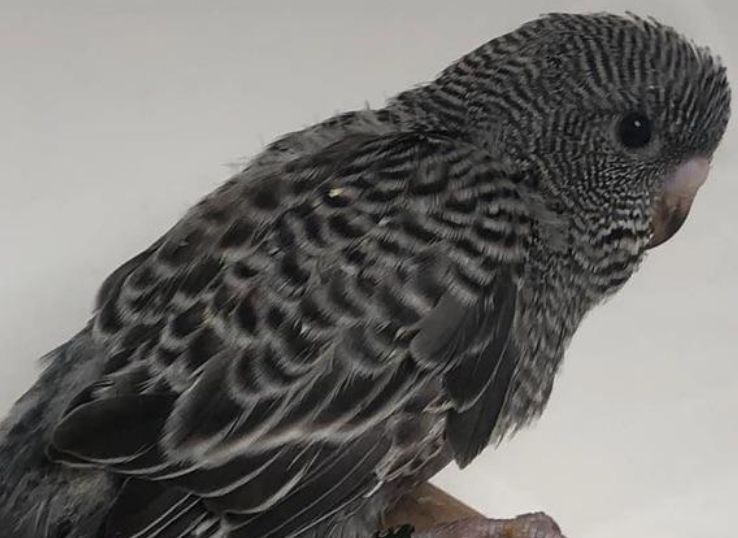Black-faced Budgie ( Complete Information)
Last Updated on February 4, 2023 by Ali Shahid

You wonder! How could it be even possible? A black-faced budgie! What is a blackface budgie? It is a new variety of budgies that appeared in the 1990s in the Netherlands. This variety has strong dark barring covering its entire head and face, even as an adult.
Black-faced Budgie
The Anthracite budgerigar mutation is an extremely rare mutation that occurs in parakeets. This has a lovely and striking effect making the budgie very distinctive. These little feather friends also have barring down to their chest and abdomen, a feature that is unique amongst budgerigar varieties.
Wild budgies have different color mutations. Generally, Budgie Parakeets are green with yellow and black stripes and markings, dark blue-green-black flight, and tail feathers. By different breeding, breeders have produced almost all rainbow colors except red and pink.
We all know that establishing a good standard mutation, will take a lot of time. For the continuation of the mutations, it is recommended to engage other breeders during the breeding process.
Their experience will help you in getting more accurate results. If you do not share the knowledge, the mutation could disappear and perhaps the way to breed other budgies in the future along with it.
Let me tell you an interesting story. Two bluebirds with unusual markings were seen and bought by a breeder there. He bred them with his birds and managed to produce a small flock of them.
Unfortunately, they were all kept together, rather than being spread between a few breeders, and an illness struck and killed them, so it is thought that the variety had been lost. So, always when you do breed the birds make sure to engage others with your experiment too.
You are eager to know how these rarest budgies have been discovered. Just stick with me here and I will tell you all the possible matings done for the mutation of the colors to produce black face budgerigar.
Possible Mattings:
Let me explain to you with an example the process of possible matings for the mutations.
- If we breed black-faced with the normal. It results in a 100% normal/ black face.
- In the second round breed them with each other. 50% black face males and 50% black face females. This will result in 25% normal, 50% normal/blackface, and 25% blackface budgies.
- Now after getting 50% normal/ black face just breed them with normal and you will get 50% normal and 50% normal/black face.
- And in the final round, you will have to do breeding of blackface with blackface and get 100% blackface budgies.
The rarest one!
Frequently Asked Questions:
Can budgies change color?
Yes, Budgies do change color but it usually occurs in the adult age. When they are aging from the chick to adult age after their first molt, they develop full adult coloring. But once fully grown, budgies do not change color again.
What is lacewing budgie?
Another type of mutation, which has a similar appearance to the Lutino and Albino, is lacewing budgies. These budgies have a clear body color of yellow (in the green series) or white (in the blue series) and have red-eye as well.
What is a rainbow budgie?
One of my all-time favorite mutations is a rainbow spangle. The rainbow budgies are usually known as “Toto” with all the soft colors, one slowly melting into the other. Rainbow budgies combine the blue, yellow face, opaline, and clearwing mutations.
Can a brother and sister budgie breed?
The answer is yes, but uncommon. If the siblings live in the same cage they can breed upon reaching sexual maturity. If you don’t want them to mate, you can separate them before reaching that age.
Final Verdict:
So, an Anthracite budgie, a dark grey color, is one of the rarest colors observed in parakeets after mutation.
Budgies are loved due to their different charming colors like rainbow, clearwing, and lacewing parakeets. These colors are caused by genetic mutations, so a rare color can become more and more common over time.
Hopefully, this article will help you understand the process of mutation and the different colors of parakeets. If you want to learn more about the budgies, let us know in the comment section below.
It will be highly appreciated.

